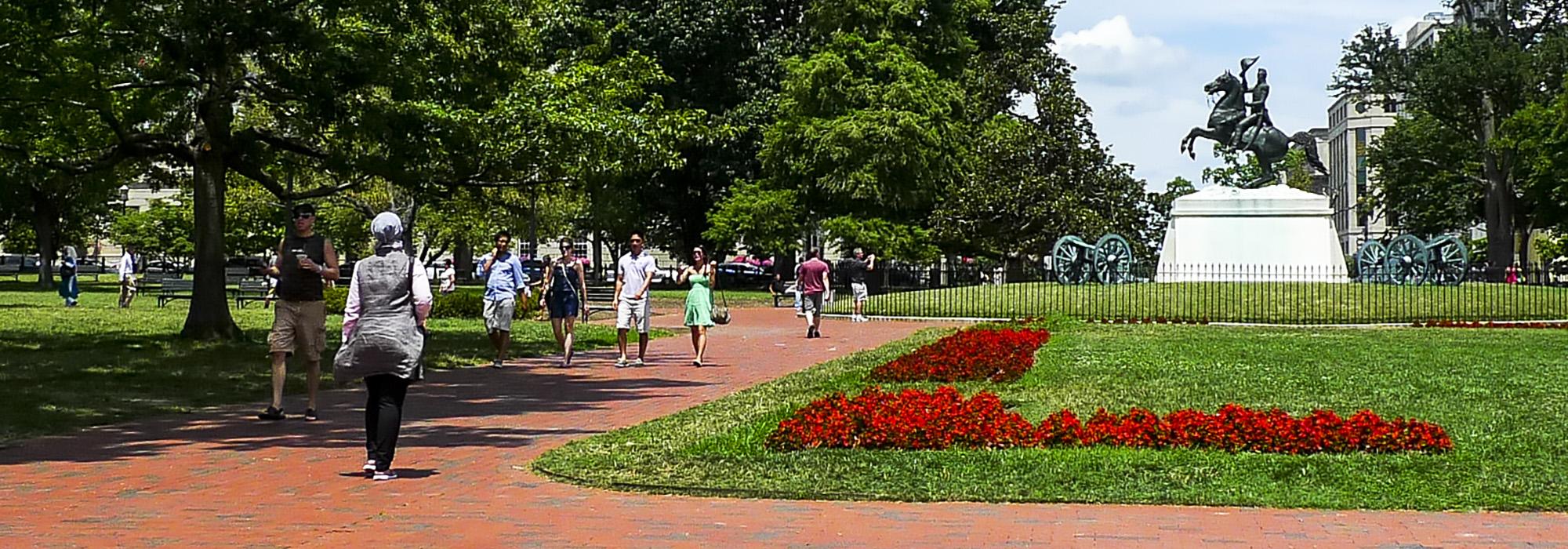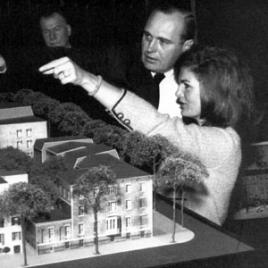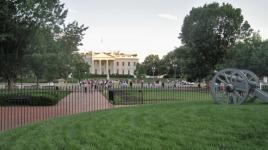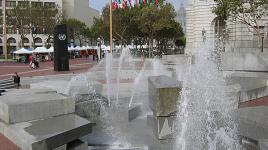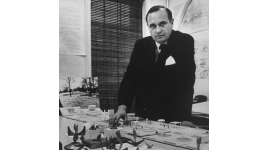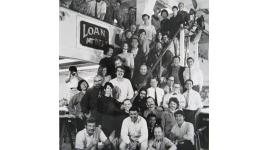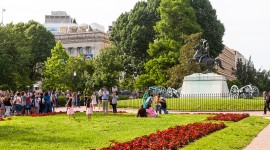Pioneer Information
Born in Oakland, California, Warnecke earned a bachelor’s degree from Stanford in 1941 and completed his M.Arch. at the Harvard Graduate School of Design under Walter Gropius in 1942. Although an early apprenticeship with his father’s architectural firm exposed him to the Beaux-Arts tradition, he opened his own offices in 1946 and became committed to Contextualism—an approach that sought to harmonize a building’s design with the physical, historical, and cultural significance of its local environment.
By the 1970s Warnecke’s firm (renamed John Carl Warnecke & Associates in 1958) was one of the nation’s largest, with many important buildings to its credit. His master plan for Washington, D.C.’s Lafayette Square area (across from the White House) included the preservation of historic homes, along with the construction of the National Courts Building in 1967, and the New Executive Office Building in 1969. Many of his most significant commissions were the result of his friendship with President John F. Kennedy, who also appointed him to the Commission of Fine Arts, which approves all federal building projects in Washington, where he served from 1963 to 1967. His close acquaintance with the family resulted in Jacqueline Kennedy choosing him to design President Kennedy’s gravesite at Arlington National Cemetery after the President’s death in 1963, a project which would become one of Warnecke’s most remembered.



